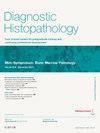A history of forensic neuropathology
引用次数: 0
Abstract
Forensic neuropathology is a subspecialty of neuropathology involving those cases that may enter the criminal and civil justice courts and medico-legal death investigation systems. The cases involve trauma, poisons and diseases related to the central and peripheral nervous system. Though nervous system disorders and trauma to the brain are recorded in literature from Ancient Egypt, a better understanding of diseases, trauma and mechanisms of injury began to emerge with the writings of Renaissance surgeons with military experience. Further development came with the knowledge of cell theory and neurohistology in the nineteenth century, with the ability to examine the whole brain after fixation. Textbooks on forensic neuropathology were not produced until after World War Two. A better understanding of the pathology of neurotrauma and poisons affecting the central nervous system was developed in the twentieth century. Concepts of sudden death in epilepsy, paediatric head injury, vertebral artery trauma and hypoxic brain damage were all recognized in the last century. More recently immunohistochemistry has added to our knowledge of axonal injury. Neuroimaging, particularly CT scans have become regular tools for postmortem examinations. Recently genetic testing has become available for autopsy investigation, with applicability to vascular and thrombotic disorders as well as epilepsy. Forensic neuropathology has both an ancient and more recent history and continues to develop.
法医神经病理学史
法医神经病理学是神经病理学的一个分支专业,涉及那些可能进入刑事和民事法庭以及医学法律死亡调查系统的病例。这些病例涉及与中枢和周围神经系统有关的创伤、毒物和疾病。虽然神经系统疾病和大脑创伤在古埃及的文献中就有记载,但随着文艺复兴时期具有军事经验的外科医生的著作问世,人们开始对疾病、创伤和损伤机制有了更好的了解。十九世纪,随着细胞理论和神经组织学知识的发展,人们有能力在固定后对整个大脑进行检查。法医神经病理学教科书直到第二次世界大战后才问世。二十世纪,人们对影响中枢神经系统的神经创伤和毒物的病理学有了更深入的了解。癫痫猝死、小儿颅脑损伤、椎动脉创伤和缺氧性脑损伤等概念都是在上个世纪得到确认的。最近,免疫组化技术增加了我们对轴突损伤的了解。神经影像学,尤其是 CT 扫描已成为尸检的常规工具。最近,基因检测也可用于尸检调查,适用于血管和血栓性疾病以及癫痫。法医神经病理学既有悠久的历史,也有较近的发展,并在继续发展。
本文章由计算机程序翻译,如有差异,请以英文原文为准。
求助全文
约1分钟内获得全文
求助全文
来源期刊

Diagnostic Histopathology
Medicine-Pathology and Forensic Medicine
CiteScore
1.30
自引率
0.00%
发文量
64
期刊介绍:
This monthly review journal aims to provide the practising diagnostic pathologist and trainee pathologist with up-to-date reviews on histopathology and cytology and related technical advances. Each issue contains invited articles on a variety of topics from experts in the field and includes a mini-symposium exploring one subject in greater depth. Articles consist of system-based, disease-based reviews and advances in technology. They update the readers on day-to-day diagnostic work and keep them informed of important new developments. An additional feature is the short section devoted to hypotheses; these have been refereed. There is also a correspondence section.
 求助内容:
求助内容: 应助结果提醒方式:
应助结果提醒方式:


